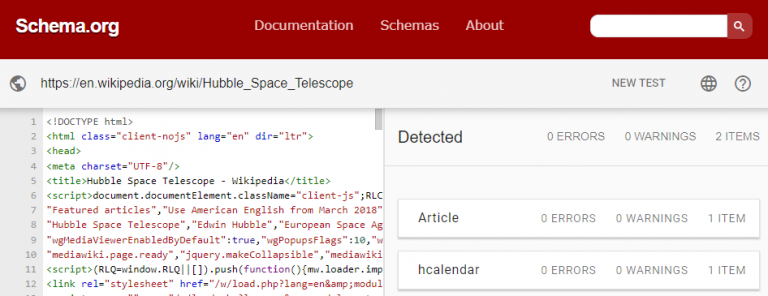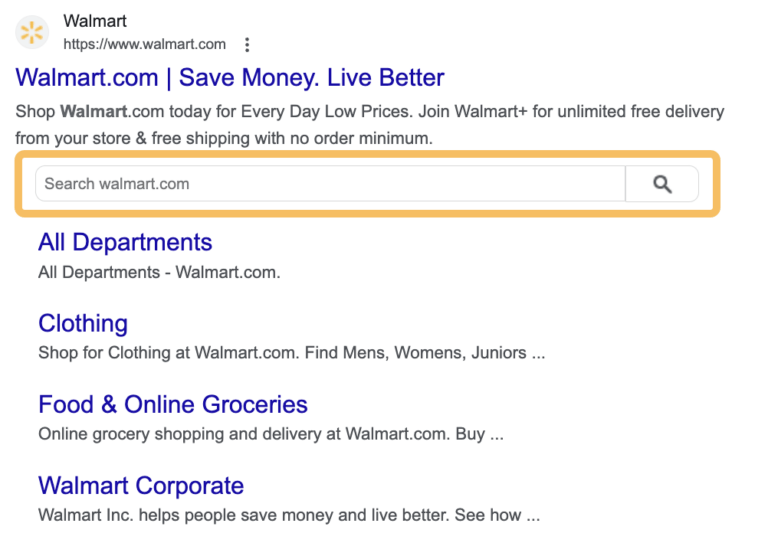
How to Use Schema to Claim SERP Features
How to use schema to claim a spot in the SERP features is your key to unlocking better visibility for your website. Schema markup, a structured data vocabulary, allows search engines to understand your content better, potentially boosting your ranking and visibility in specific search result features like featured snippets. This comprehensive guide will walk you through everything from the basics of schema markup to advanced techniques, helping you maximize your chances of claiming those coveted SERP spots.
We’ll explore different types of schema markup, how to implement them on your WordPress site, and how to validate your implementation to ensure accuracy. Learn the specific markup needed for different SERP features and best practices to avoid common mistakes. We’ll also cover advanced techniques and real-world examples to give you a practical understanding.
Introduction to Schema Markup

Schema markup is a standardized vocabulary of tags that helps search engines better understand the content of a webpage. By providing structured data, you’re essentially giving search engines a more detailed description of what your content is about. This allows search engines to display more informative results to users, often in rich snippets or featured snippets within the search engine results pages (SERPs).Using schema markup significantly improves the visibility and click-through rate of your website.
It can also improve the overall user experience, as search engines can provide more relevant information directly in the SERPs, reducing the need for users to click through to your site.
Schema Markup Types and Uses
Schema markup comes in various types, each designed to describe specific kinds of content. Understanding these types allows you to target specific search results with detailed information. This detailed information leads to higher visibility and engagement.
- Product Schema: This type of markup is crucial for e-commerce websites. It helps search engines understand the details of a product, such as its name, price, availability, and description. This allows search engines to display product information directly in the SERPs, such as star ratings and pricing. A properly structured product schema can lead to more attractive search results, encouraging users to click through to your product pages.
- Article Schema: This schema type is tailored for news articles, blog posts, and other types of articles. By providing information like the author, publication date, and content categories, search engines can display richer snippets in the SERPs. This can improve the visibility of your articles and attract users interested in specific topics. The inclusion of author and publication date can boost perceived credibility, especially in the news or blog space.
- Event Schema: This schema is ideal for showcasing events, such as concerts, conferences, or workshops. It allows you to include details like the date, time, location, and description of the event, leading to more comprehensive search results. This provides users with detailed event information in the SERP, making it easier to discover and register for events.
Schema Markup and Search Engine Understanding
Schema markup acts as a translator between your webpage’s content and search engines. By adding structured data using schema markup, you’re effectively providing search engines with a detailed explanation of what each webpage is about. This clear communication allows search engines to understand the context of the information on your site, leading to improved search result relevance.
| Schema Type | Typical Applications |
|---|---|
| Product | E-commerce websites, online stores |
| Article | News articles, blog posts, tutorials |
| Event | Concert listings, conferences, workshops |
| Recipe | Food blogs, cooking websites |
| Person | Author pages, celebrity profiles |
Schema Markup for Claiming SERP Features
Schema markup is a powerful tool for telling search engines what your web page is about. By using structured data, you’re essentially providing a detailed description of your content, helping search engines understand it better and potentially position your page more prominently in search results. This can lead to increased visibility and organic traffic. This guide focuses on how to utilize schema markup to claim specific SERP features.Schema markup, when implemented correctly, enhances search engine understanding of the content.
This enhanced understanding can lead to your webpage being displayed more prominently in search engine result pages (SERPs), increasing visibility and click-through rates.
SERP Features Claimable with Schema Markup
Schema markup isn’t a magic bullet, but it can significantly improve your chances of claiming various SERP features. The features directly impacted by schema markup include, but aren’t limited to: Featured Snippets, Knowledge Panels, Local Pack, and rich results for products, events, and recipes. The more relevant and accurate your schema markup, the better your chances of earning these prominent positions.
Featured Snippets
Featured snippets, often displayed at the top of search results, provide concise answers to user queries. They significantly increase visibility and attract clicks. To claim a featured snippet, your page needs to be structured to directly answer the question posed in the search query.
| Schema Property | Description | Example |
|---|---|---|
| `@context` | Specifies the context of the schema. | `https://schema.org` |
| `@type` | Specifies the type of the snippet. | `HowTo` |
| `question` | The question being answered. | “How to bake a cake?” |
| `answer` | The answer to the question. | “Preheat oven to 350°F…” |
| `estimatedCost` | Optional, estimates cost for the action. | $10 |
Knowledge Panels
Knowledge panels provide concise summaries of entities, like people, organizations, or products. Schema markup helps search engines identify and display relevant information.
Local Pack
Schema markup is crucial for claiming a spot in the Local Pack. This feature displays local businesses in search results, making it vital for businesses with a physical presence. Schema markup ensures your business appears in the results.
Rich Results for Products, Events, and Recipes
Schema markup significantly impacts rich results for various content types. Products benefit from schema that clarifies details like price, availability, and reviews. Events are better showcased with dates, times, locations, and descriptions. Recipes gain prominence with ingredients, instructions, and nutritional information.
Implementing Schema Markup: How To Use Schema To Claim A Spot In The Serp Features
Schema markup is a powerful tool for helping search engines understand the content on your website. By adding structured data to your HTML, you provide search engines with context, which can lead to improved rankings and visibility in SERP features like Knowledge Panels, rich results, and product listings. This detailed guide will show you how to effectively implement schema markup across your website, using various methods and focusing on practical examples.Implementing schema markup isn’t just about adding tags to your website; it’s about providing a clear and consistent language that search engines can understand, ultimately improving the user experience by providing more relevant and informative results.
Methods for Implementing Schema Markup
Several methods exist for implementing schema markup, each with its own advantages and considerations. The most common approach is using schema.org vocabulary, a standardized set of schemas that define how to structure data for various types of content. Alternatively, dedicated structured data testing tools can be invaluable for validating and ensuring proper implementation.
Using schema.org Vocabulary
Schema.org provides a standardized vocabulary for describing various types of content. This vocabulary allows you to define the type of content on your website, attributes for each item, and relationships between items. This standardization ensures search engines can understand the context of your data and display it appropriately. Using the schema.org vocabulary involves embedding specific schema tags directly within your HTML code.
Example Implementation in HTML
Consider a product page. Here’s an example of how to implement schema markup for a product using schema.org vocabulary:“`html “`This code snippet adds structured data for a product, including its name, description, image, price, and brand.
Implementing Schema Markup for Different Content Types
Adding schema markup to different types of content requires adjusting the schema.org vocabulary to fit the specific content type.
- Products: Use the `Product` schema type to describe product details like name, description, price, and images.
- Articles: Use the `Article` schema type to provide information about the author, publication date, and content tags.
- Events: Use the `Event` schema type to define the event’s name, date, location, and other relevant details.
Each content type will have specific attributes that need to be included in the schema markup.
Implementing Schema Markup in WordPress
WordPress offers various plugins to simplify the process of adding schema markup to your website. These plugins often automate the process of adding schema markup for different content types, reducing manual coding effort.
- Plugin Installation: Find and install a reputable schema markup plugin from the WordPress repository.
- Plugin Configuration: Configure the plugin to target the appropriate content types (e.g., products, articles, events).
- Review and Validation: Ensure the plugin is correctly implementing the schema markup by using testing tools.
By following these steps, you can effectively implement schema markup in WordPress without extensive manual coding.
Schema Validation and Testing
Ensuring your schema markup is correctly implemented is crucial for search engines to understand and use it effectively. Inaccurate or improperly formatted schema can hinder your chances of appearing in rich results and other SERP features. Thorough validation is the key to preventing such issues.Validation involves checking your schema against the specifications to identify errors or inconsistencies. This step is often overlooked, but it’s a vital component of a successful schema implementation strategy.
Schema Markup Validation Tools
Various online tools and methods exist to validate your schema markup. These tools analyze your code and pinpoint potential problems, allowing you to fix them promptly.
- Schema.org’s validator is a valuable resource. It’s a widely recognized and authoritative tool. By entering your schema markup, you receive a detailed report indicating errors or potential issues. This report helps in understanding and rectifying the identified problems. It’s a crucial step in ensuring accuracy and consistency.
- Google’s Rich Results Test is another powerful tool. It specifically assesses your markup’s compatibility with Google’s search algorithms. This tool is particularly important as it focuses on how Google interprets the data. It provides feedback on how Google views your markup, which is essential for optimizing its performance in search results.
- Other third-party validators, such as the ones offered by specific schema markup generators, are also available. These tools often provide additional features and insights beyond basic validation. They offer a more comprehensive perspective on the implementation. Some tools might include detailed explanations or suggestions for improvement.
Identifying and Correcting Errors
Thorough examination of the validation report is essential. Errors are usually highlighted with clear explanations, aiding in the rectification process. Common errors include incorrect syntax, missing attributes, and mismatched data types.
Want to snag a prime spot in search results? Using schema markup is key. It helps search engines understand your content, leading to a higher chance of appearing in those coveted SERP features. But, while you’re optimizing for search engines, don’t forget to showcase your brand’s best on LinkedIn. LinkedIn showcase pages highlight your brand’s best by letting you create specialized profiles for different aspects of your business.
Ultimately, mastering schema is still crucial for getting noticed in search results.
- Pay close attention to error messages. They often pinpoint the exact location and nature of the problem.
- Review the schema.org documentation for the specific schema type you’re using. This documentation provides comprehensive information about the expected attributes, data types, and structure.
- Use a code editor with syntax highlighting for schema markup. This feature helps in quickly identifying syntax errors within the code. The visual cues enhance the process of debugging.
Schema Validation Tools Comparison
The following table provides a comparative overview of popular schema validation tools, highlighting their key features:
| Tool | Features | Pros | Cons |
|---|---|---|---|
| Schema.org Validator | Basic validation, error reporting | Free, readily available, authoritative | Limited advanced features |
| Google Rich Results Test | Validation focused on Google’s interpretation, rich snippets preview | Critical for Google’s understanding, previews potential rich results | Limited detailed error messages |
| Third-party validators | May include advanced features, specific schema support, and detailed explanation | Specific support for various schema types, potential in-depth analysis | Potentially subscription-based, less widespread adoption |
Best Practices and Considerations
Schema markup, while powerful, requires careful implementation to maximize its impact. Following best practices ensures your efforts are rewarded with improved search visibility. Conversely, common mistakes can hinder your progress and even lead to penalties. This section will Artikel crucial strategies for optimizing your schema markup, providing detailed examples tailored for diverse website types.Effective schema markup implementation isn’t a one-size-fits-all approach.
It necessitates understanding the nuances of different strategies and applying them to specific website contexts. A well-structured implementation, avoiding common pitfalls, is key to unlocking the full potential of schema markup.
Best Practices for Implementing Schema Markup
Implementing schema markup effectively requires a meticulous approach. Thorough research, precise data entry, and adherence to guidelines are crucial. This ensures that search engines accurately interpret the data and display it correctly in search results.
- Maintain Data Accuracy: Inaccurate or incomplete data can negatively affect your search ranking and user experience. Double-check all data fields to ensure precision. Errors lead to incorrect display and potentially harm your efforts. Use reliable sources to verify information before entering it into your schema markup.
- Use Valid Schema Types: Choose the schema type that precisely reflects your content. Using the correct schema type ensures that search engines can understand and display the relevant information. Using an inappropriate schema type can lead to wasted effort and minimal benefits.
- Keep Schema Markup Concise and Clean: Avoid excessive markup. Focus on providing the essential information required for the schema type. Overly complex markup can confuse search engines and negatively affect your performance. Prioritize clarity and conciseness in your implementation.
- Test and Validate Your Markup: Use schema validation tools to ensure your markup is correct. This step helps catch errors and ensures that search engines can interpret your data correctly. Early validation helps avoid common errors and allows for quick corrections.
Common Mistakes to Avoid
Careless implementation can negate the benefits of schema markup. Understanding common pitfalls is essential to prevent these issues. This section focuses on specific errors to steer clear of, helping you create effective markup.
- Incorrect Schema Type Selection: Using the wrong schema type leads to misinterpretation of your data. Carefully selecting the appropriate schema type for each page is crucial for accurate representation.
- Data Entry Errors: Typos or inaccuracies in data fields can lead to incorrect display in search results and negatively impact your search ranking. Thorough review and validation of data are essential to prevent errors.
- Ignoring Schema Markup Best Practices: Following the guidelines of schema.org is critical for optimal results. Adhering to these guidelines is essential to ensure compatibility with search engines.
- Overusing Schema Markup: Excessive use of schema markup can be counterproductive. Concentrate on providing essential data relevant to your content. Avoid unnecessary additions, which may confuse search engines.
Strategies for Optimizing Schema Markup
Optimizing schema markup involves choosing the right approach for your website’s specific needs. This section explores various strategies and their potential impact. Comparing different approaches will help you choose the best strategy for your situation.
Optimizing your website with schema markup is key to snagging those coveted SERP features. But, before you dive deep into structured data, consider if AI-generated content is actually boosting your SEO efforts. Checking out this article on does ai content work for seo might help you decide. Ultimately, though, using schema effectively is crucial for your site to stand out in the search results.
Using the right schema markup for your specific content type will greatly improve your chances of claiming a prime spot.
- Targeted Implementation: Focus on specific pages and content that are most likely to benefit from schema markup. Prioritize pages with high search volume or those presenting valuable information. Implementing schema markup selectively can enhance its effectiveness.
- Comprehensive Approach: Implement schema markup on all relevant pages for a holistic approach. Ensuring all relevant content is marked up can improve your website’s visibility and performance in search results. A comprehensive strategy can yield significant results.
Examples of Effective Schema Markup Implementations
This section illustrates schema markup implementation for different website types. Understanding how different types of websites utilize schema markup can enhance your own implementation strategies.
| Website Type | Schema Type | Example Data |
|---|---|---|
| E-commerce Store | Product | Product name, price, description, availability, images |
| Restaurant Website | Restaurant | Restaurant name, address, phone number, cuisine type, menu items |
| Blog | Article | Article title, author, date published, description, s |
Examples of Schema Markup Implementation
Schema markup is not just a technical exercise; it’s a crucial step in optimizing your website for search engines. By providing structured data about your content, you’re essentially giving search engines a clearer understanding of what your pages are about. This enhanced understanding leads to improved visibility in search results, including coveted rich snippets and featured snippets. Proper implementation unlocks the potential for higher click-through rates and improved organic traffic.
Product Schema Markup
Understanding how to structure schema markup for products is essential for e-commerce websites. This structured data helps search engines display more detailed information about products in search results, which can lead to increased click-through rates. By providing clear and concise information about products, you’re essentially improving the user experience and increasing the chances of driving more conversions.
Want to boost your restaurant’s visibility in search results? Using schema markup is key to claiming those coveted SERP features. It’s all about giving search engines the information they need to understand your site, and this translates directly into better rankings. For example, you could consider engaging your audience with fun Instagram polls, like the ones suggested in this great article on 8 ideas of food polls on instagram for your resturants 8 ideas of food polls on instagram for your resturants.
Ultimately, good SEO practices, like using schema markup effectively, will help you get found by more potential customers.
| Property | Description | Example Value |
|---|---|---|
| name | The name of the product. | “Example Product Name” |
| description | A concise description of the product. | “A high-quality product with excellent features.” |
| image | URL of the product image. | “https://example.com/product-image.jpg” |
| offers | Details about offers and pricing. |
|
| brand | The brand of the product. | “Example Brand” |
| sku | Stock Keeping Unit. | “SKU12345” |
Event Schema Markup
Schema markup for events allows search engines to display event details in search results, enhancing visibility and attracting attendees. Providing detailed information about the event makes it easier for potential attendees to find and engage with the event.
Here’s a detailed example of schema markup for an event:
“`html “`
This markup includes essential details such as dates, location, organizer, and pricing. Remember to adapt this example to fit the specifics of your event.
Local Business Schema Markup
Using schema markup for local businesses is critical for visibility in local search results. It enables search engines to display crucial information like address, phone number, and operating hours directly in search results, significantly improving user experience and attracting local customers.
To ensure your business appears in local search results, include the following properties:
@type: Specify the type asLocalBusiness.name: Include the business name.address: Provide the complete address (street address, city, region, postal code, country).telephone: Include the phone number.openingHours: Specify the business hours. This is crucial for users seeking real-time information about your business’ availability.geo: Specify the geographic coordinates for your business location.
Advanced Schema Markup Techniques

Schema markup, while fundamental for claiming SERP features, becomes even more powerful when employing advanced techniques. These techniques allow for a more nuanced representation of your content, increasing the chances of attracting the attention of search engines and optimizing your visibility for specific search results. This section delves into these methods, focusing on improving rich results, managing reviews, and leveraging diverse schema types.Beyond basic implementation, advanced schema markup empowers you to fine-tune your presence in search results.
By utilizing more specific schema types and tailoring their attributes, you can significantly improve your chances of displaying rich results and attracting users.
Optimizing for Specific SERP Features
Advanced schema markup goes beyond basic product or article descriptions. By employing specific schema types, you can tailor your markup to target particular search results features. For instance, if your goal is to appear in the “How To” carousel, you can use the “HowTo” schema type to accurately describe the steps in a procedure. Likewise, the “FAQPage” schema type allows you to directly address common questions related to your product or service, potentially increasing your visibility in answer boxes.
This targeted approach is crucial for maximizing the impact of your schema markup.
Improving Rich Results Display
Rich results often include enhanced visuals and structured information within search results. Employing advanced schema markup types allows you to control these elements. For example, using the “Recipe” schema type can lead to a visually appealing recipe card in search results, including images, ingredients, and preparation times. Similarly, the “VideoObject” schema type can be used to highlight specific video content within a website, potentially leading to a rich result that includes the video preview in search.
These detailed structured data representations can significantly enhance the user experience, increasing click-through rates.
Managing Reviews and Ratings, How to use schema to claim a spot in the serp features
Schema markup plays a critical role in managing reviews and ratings. The “AggregateRating” schema type, combined with “Review” schema items, provides a structured way to display and manage customer feedback. This allows you to showcase star ratings and a summary of user reviews directly within search results, thereby increasing trust and credibility. A well-structured review section can differentiate your business from competitors and encourage users to engage with your content.
This technique helps showcase social proof and enhance trustworthiness.
Different Advanced Schema Markup Types
- HowTo: This schema type is specifically designed for articles or web pages that provide step-by-step instructions. This allows search engines to understand the procedural nature of the content, potentially leading to its inclusion in the “How To” carousel, improving visibility for users seeking guidance.
- FAQPage: This schema type is intended for web pages that contain frequently asked questions (FAQs) and their answers. By marking up FAQs, you can potentially increase your appearance in answer boxes, as search engines can more easily extract and present relevant information to users searching for answers to specific queries.
- Recipe: This schema type is ideal for showcasing recipes on your website. It allows search engines to extract critical recipe information, such as ingredients, preparation time, and instructions, potentially leading to a visually rich recipe card within search results. This is especially useful for food blogs or websites selling cookbooks.
- VideoObject: This schema type is essential for showcasing video content. By marking up videos, you can potentially lead to a richer video display in search results, including a preview of the video within the search engine results page (SERP).
- AggregateRating: Used to present aggregated rating data, crucial for showcasing customer reviews and ratings. Combining this with “Review” items allows you to provide a comprehensive view of user feedback, which can significantly influence user perception and conversion rates.
End of Discussion
In conclusion, understanding and implementing schema markup is crucial for optimizing your website’s visibility in search engine results. By using the right schema markup for your content, you can increase your chances of appearing in valuable SERP features, leading to more organic traffic and better user engagement. This guide has provided a roadmap to successfully integrate schema markup into your WordPress site.
Now, go forth and claim those prime spots in the search engine results pages!





